The Unified Business Model: Digital Agency Services
- Home
- The Unified Business Model: Digital Agency Services
This is a transcript of a talk from HubSpot at the HubSpot User Group Meeting in June 2019 in London.
I'm going to split my session into two parts. One is to lead right into some of the key points and questions raised about:
- How do I do this?
- HubSpot has done this and how would I replicate that?
- How might I do the flywheel?
I'm going to switch into geek mode briefly to show you some examples of people who are doing it really well.
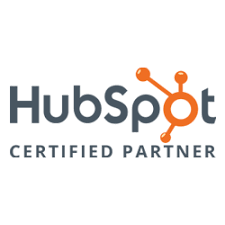

I’m Pete Nicholls, I run Hub Do and I live in the partner community. I'm a HubSpot partner and platinum partner, and operate roughly a third of my business here in Europe, a third in Asia Pacific and a third in the US but a little bit different in that I support other partners rather than customers directly. I get to work with a lot of partners and the challenges that they face in doing exactly what's being raised in those questions.
What is a Unified Business?
The reason I've called this unified business is because to me this is what you need to become to embrace inbound and to become an inbound organisation. I want to give you some examples because, in a little bit of a way history was repeating here, we've seen a big bang of tech explosion. When I started watching this, I was working for a small company you might've heard of called Cisco. That's what brought me to the UK over 20 years ago. My role was to help try and detangle some of the complexity that was happening in IT. The Martech landscape, the Sales tech landscape, the customer experience tech landscape has gone from a few hundred start-ups to thousands, conservatively 7,000, probably more like 10 plus of these. HubSpot with the connect program gives you a curated list of this.
You've got a safer territory and great applications like the NPS example earlier of Ask Nicely, that's a great New Zealand company. They've got a really deep integration with HubSpot and it works well. This is like a big bang. So if you're in marketing or sales or any of the disciplines using tech, it's become confusing and I guess there are a lot of applications within the company but:
- Who understands them all?
- How do they all fit together?
You could look at StacKey's awards of how companies are mapping out the way these applications work together. What I'd say is to navigate your way through this is, I'm going to share some ideas of things that I've seen work well for companies to navigate these themselves. For the last 10 years we've been talking about the Sales and Marketing alignment.

Align your Sales and Marketing teams
Dan Tyre taught us, from HubSpot, the whole marketing movement of how to get sales and marketing working well together. For sales they want to see the leads so could we put a goal on the marketing department of how many leads they're going to deliver? So that Sales can make their quota. On the other side of the coin, there is marketing saying that sales need to follow up on these leads. So let's put a Service Level Agreement on how quickly that could happen. It's been moving these parts around to try and make two units operate far more functionally. The trouble is a whole chess board, this game, the chess boards went kind of blind to the fact that customers took the whole chess board away. We're trying to operate and set ways of measuring things and yet the chessboard belongs to the customer.
"How do you get Sales and Marketing working together?"
Now we spoke just briefly about, how vital it is that your happy customers are your marketing department. But when it’s a manage “when” service and we say how to promote that, we default to where we should put some more blogs together that we've written. You shouldn't be writing those blogs because we've already said that's not where it should come from because nobody's going to believe them anyway. It's about the whole community engaging in that. So it's quite challenging. I've put the picture of a knight up here because you can have a chess piece that moves in a coordinated way, two spaces, and one space in a coordinated way. But if you take the board away, there's only one chest piece that you want to be and that's the queen because it's the only piece that can move in any direction.

They can see any opportunity and have a fast-running flywheel that is taking friction out of your business.
"How do you get to become a queen that can move that way?"
Now this is a little scary because if you've been in the marketing area as an I- shape person, not a T-shaped person as Brian Halligan described and you know marketing well, but suddenly you're expected to know Sales and Customer Service and all of these other disciplines.
- Do you want to become more T-shaped?
- How do you do that?
A business that gets this right becomes almost unbeatable! Amazon was mentioned. Let's look at a couple of others. It's both scary and it's an opportunity because. If you get this right, you can accelerate because a lot of other companies will struggle to change their behaviour because they're stuck in their I- shaped silos.
Are you expecting overnight results?
A Tesla looks like any other car and it does what a car does, but it doesn't have an exhaust pipe. It's taken a lot of years of engineering to do that. But now you see the auto industry scrambling to pick up the pace and compete there. So that's a B2C example.B2B, if you're into launching satellites, then you've got what SpaceX has done in engineering. The Falcon Nine rocket does a fantastic job and it’s like the Amazon delivery of satellites. It'll go and put the satellite exactly where you want it to be, but then it turns around and lands itself. It didn't happen overnight and a ton of work has happened into making that a fantastic customer experience.
"If you're launching satellites, you're putting it on a rocket that can carry twice the payload at a third of the cost."
So if you're any other rocket company, how do you compete with that? But that doesn't happen overnight. Of course, there's a lot of engineering work that has gone into having this queen. I'd say both of these are like the picture of a queen. These companies could move after any opportunity that sits in their field of vision and executes amazingly well but scary to be a competitor to those and Amazon. That didn't happen overnight either, but of course, now it's unstoppable and the customer experience is paramount.

I want to share with you some human stories because part of what brought me to the UK with this company, Cisco, is that we spotted a massive bang of technology that was happening at the time. We take it for granted today that we can speak on this device and we can see each other on this device and we can email on this device but 20 years ago that was not the case at all. You had a phone on a desk and a computer, nothing was connected, but as a technology company, we knew that everything was becoming software. The Internet was changing everything and so these technologies could converge in ways that were so much better for end users. So imagine, on the left is Frank Frankston. An I-shaped person. Frank works in a hundred-year-old industry, which is the telephony industry. In telephony, Frank knows for his company:
- How to install a new PBX system
- How to scope all the wiring
- All of the connections into the public switched telephone network to handle maximum peak load through the day.
Around 15 years ago, Frank was going home to his wife because he'd been in a meeting talking about the fit-out of the new office.
Frank's fearful because he didn't understand half of the conversation. Who can relate to that?
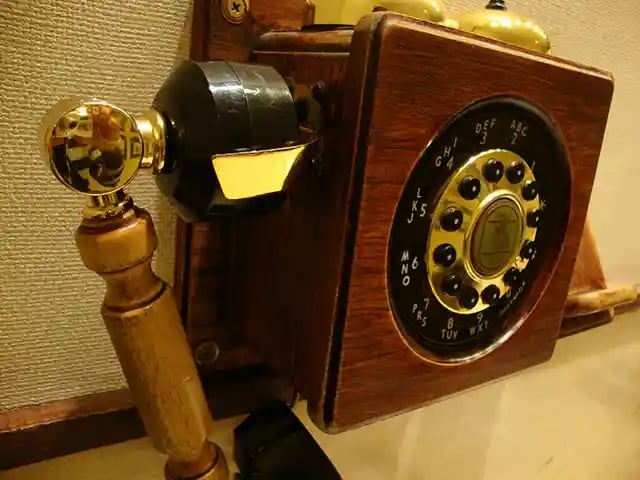
That was a really scary time for someone like Frank. He was held in high regard by his employer because he knew his technology well. When things converge, it gets confusing fast so Frank either had to go and work for another company that was going to stick with traditional PBX voice systems or become T-shaped and embrace the change to figure out that voice, video and data were going to converge. So at the time, we built architecture for that and it was called Avid architecture for voice video and integrated data. It was my job in the UK and Ireland to make sure that happens successfully. We had 130 engineers and we wanted to make sure that that new technology went to market well it was all through a partner community so we had to take the partners that would like Frank as well and take the whole ecosystem through that change so that's been done.
"It's game over"
If you're not doing community-wide communications these days, then it's really hard to compete. So it was an opportunity and was a threat. Handling thousands of partners in that space, taking them through that change and doing solutions selling. Let's call one of them Michael and there were a lot of Michael's that I was helping to take through another change. Michael's a computing expert and he would put all the large computer systems into the server rooms of an office where it held all the company's data, ERP systems and processing systems. Around 10 years ago, Michael went home to his wife and he had been in a meeting where he didn't understand half of the conversation because it was all about virtualisation and unified fabrics and whole changes in storage architecture. He was an I-shaped person in server technology and he knew Hewlett Packard computers well. I had to put a phone call to my colleagues over at Hewlett Packard when I was in Asia Pacific at the time leading this change to say,
"I'm sorry but we were friends with you yesterday and we're now enemies today because we're going after the unified computing market and because all these technologies are converging."
I'll see a parallel thereof where computing and these other technologies converged. So if you picture yourself as Michael, it's a frightening place to be. You do something well and your whole self-worth is built on how well you know your topic and suddenly someone takes your chessboard away. You are the default to:
- Standard behaviour,
- What you know
- You stick with a company that stays in,
- Playing it safe,
You know you can't stay there.

You need to become T-shaped to go through that. Unified computing and we started with unified communications. This is why I'm calling this Unified business because I see Sales and Marketing and all of these parts are forcing change. It's the customer that is forcing that change in the software that is enabling it and HubSpots in a fantastic position to be that platform to allow you to do that and add on applications.
Let's talk about Angela, Angela is a marketing manager. Let's pretend that Frank is the sales manager who has a quota to hit and is thumping the table to Angela to say “I'm not getting enough leads or the leads that you're getting me are not good enough” and in a centre is Michael who runs Customer Service. Everybody's talking about the best possible leads that are going to come from happy customers, so it's Michael potentially that they should be pounding the table and saying, “Where's my leads?” Not Angela, but unless you can get out of the silos, you end up with that kind of dysfunctional way of operating. I do see many businesses that run this way because we know our core of expertise. What we need is for all these people to become T-shaped so that they can sit around the table and agree on something. I don't want to align marketing and sales together if potentially I just create something that's even more dysfunctional and it's not aligned to any one thing.
- Why does this company exist?
- What are you here to do?
- What's your contribution?
- What do I get the same answer from each person I talk to now, HubSpot?
As we align closely with HubSpot, we love the company because we believe what they believe. For HubSpot, there's a very clear reason, isn't it? It's to make the world more inbound so that business is more empathetic, more human and more personable. So that aligns with what we like to do. To become a unified business, the question came up with Brian Halligan, how do I do the flywheel? If the centre of your hub is already really well-oiled and joined up and people are aiming to achieve the same mission in your company. But it's really hard to do if the centre is dysfunctional. So if that part's not working well, you might have to go there so that you can spin up your flywheel even better.
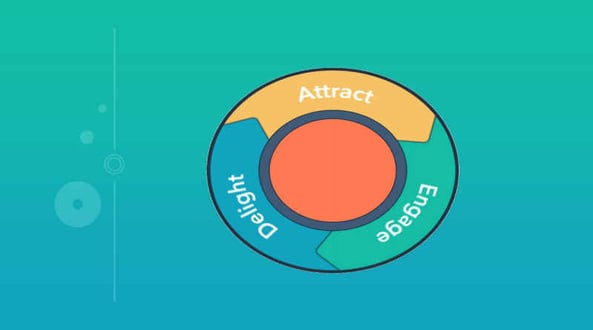
Let me give you some examples of how you might do that and some companies that are doing that. One way you can become a unified business is just go and buy a franchise. The sales, marketing and customer service, are all figured out already. Not everybody wants to become a franchise, but that is a business in a box. That's one way to do it. Let's say you don't want to become a franchise, then you've got to come back to the core. Hopefully, you are going to know Simon Sinek and start by asking why. For over 10 years we've had the value of people don't buy WHAT you do, they buy WHY you do it.
"I'm a bit of an Apple Geek because i believe what they believe"
Apple Computer. I'm a bit of an Apple Geek because I believe what they believe. I like disrupting the status quo. But I like to lead people through it.
Frank and Michael shouldn't be left without a job. They should be able to embrace the change. I start with WHY and then move to the how because the show is going to deliver that fantastic customer experience where:
- No matter who is in the company,
- Who the customer touches,
you're going to find that same sort of ethos. This is how we do things around here, whether it's marketing, sales or customer service. They are going to have a similar experience.
Then you could look at the what and you can spin up the flywheel. So think of the way as the compass that you want everybody to align to. I can't align sales marketing and customer service to each other unless I first can align them to one thing and answer
- What does this company here to do?
- What's our purpose?
- Why deliver a managed service?
For example, it's not actually about the management service, it’s why and how you do that. The Simon Sinek team, having done this hundreds of times, have said the best way that you can phrase your why is (fill in the blank), So that whatever your contribution is, whatever your impact is going to be. I've known fortunately through this exercise that my why, which is what Hubdo was built on is to give good businesses an unfair advantage.

That's my why. I sound a bit strange, but I like giving good businesses an unfair advantage. What is a good business? It's one that enriches the lives of everyone that it touches so it’s ethical companies that support our future. I feel that aligns well with HubSpot, and so I feel that's a great company to be a partner with. This is where you want to get to if you can, to get your why so that everybody at your organisation knows why you exist.
To become T-shaped, let's look at some ways I used it because it's so vital. Your organisation probably looks more like the flywheel as far as all the parts of the company that your customer might touch because they own the rule book now. All of the people within that you want to become T-shaped, if possible. In reality, that's hard to do for every single individual but the leadership team, at least should become T-shaped. One of the ways that we fixed that at Cisco is to become T-shaped. We take somebody, let's say indirect sales, who didn't understand the channel and we ran the channel. It's a poacher who turned the gatekeeper strategy. You give the job to somebody and they sure as heck understand it pretty quickly.
"If you're in sales, what are the books that you should be reading to understand more about marketing?"
To become T-shaped you must be able to see in 360, I'd recommend reading. If you're in sales, what are the books that you should be reading to understand more about marketing? It could be several of the books by Brian Halligan's friend David Meerman. I think the new rules of PR and marketing are a great place to start if you want to understand more marketing. He also has a book of new rules of sales and service. If you're in B2B, the challenger sale, and also the challenger customer, those are really good books that you can read. On the customer service side, if you don't know that much about NPS, read the Ultimate Question by Fred Reicheld. This way is just simply having common knowledge to get around the table and be able to plan.
There's also a shortcut you can do. I'm going to give you a little cheat here. Fantastic company on the south coast here in the UK. Tribal impact maps your organisation, and the individuals into how comfortable they feel in social media and their ability to engage.. Why does tribal impact exist? Tribal impact exists to raise the voices of employees so that brands and companies can build true, genuine human trust relationships with customers.

Why align with ours?
. So we love working with tribal. Here's an example of the impact that this can have. This is like a shortcut to prime the pump on becoming T-shaped because you can quickly get everybody involved in social selling and it pays off. This example, a hand call that was shared with me, is a big exercise. 300 plus sales and marketing teams throughout the duration, is a project for six months. So 12 million euros worth of new pipeline. Two to four years is the norm for procurement and everybody gets on board. To agree amazingly, that happens a whole lot faster when social selling has mobilised to the whole company and that was achieved in half the time that was expected so becoming T-shaped, lots of reading, all of that, that sounds like it's a fairly slow-moving thing. If you look into social selling for your organisation, it can quickly get a lot of people on the same page.
If the hub is really solid, then absolutely go to like ourflywheel.com that's where you can get the flywheel tools from HubSpot where you can identify how we make a fantastic customer journey right around the experienced cycle and have the whole company together on that. I think that's hard to do if the company's not operating as one. It tends to default back into usual behaviour with people just thinking in their silos and not thinking T-shaped. So there are some how–to’s of things that do work well. Let's look at some companies that I've had the good fortune to be working with globally that are doing this now. One in particular is a Rent Bridge in Dallas. Heather and Michael Park run this and they are a HubSpot partner. If you look at the website, it looks like a lot of other HubSpot partners because it talks about inbound marketing and consulting and so forth. A lot of the websites do tend to look quite similar.
This one's about to change yet fortunately to tell the true story, which is their why, is to transform the property management business so that the families and the people that work within that, They're typically small businesses, and they aim to replace the stress, overwhelm and the exhaustion that they have on a day to day basis with getting more time and more profitability. That's what this company does. They do it on HubSpot and several other pieces of software. Property Management Company is like eight businesses in one because you've got to deal with rent collection, leasing, maintenance and inspections but in every one of those you've got the owners of the property and you've got the tenants and you're trying to keep everybody happy.
"In terms of marketing, let's have people talking about you."
Rather than zeroing in on the marketing side of what Rent Bridge does, they absolutely think in 360 degrees. They help their customers turn into the queen, the chess piece of being able to go after any opportunity. I'm going to focus more on the management side of property management, which is where if you create a great customer experience, you get to delight customers and they talk about you which is much more powerful than you talking about yourself. The industry is in single family rentals and it's your typical couples and families renting a property. Typical property Management Company has 900 properties on the management, 1700 tenants. That means that each month it's a really busy place because you've got late rentals to collect, you've got leases expiring, coming due and all of that. The system that runs this is built on HubSpot and PandaDoc and several other pieces. So every time Rent Bridge brings on a new property management company Hub Do provisions the software for them. With HubSpot, its part of our role, the system that Heather and Michael have built is ingenious. They have 18 years’ experience in property management and so they've turned that into using HubSpot’s deals, tickets and tasks to automate. What about each of the processes in running a property management business?
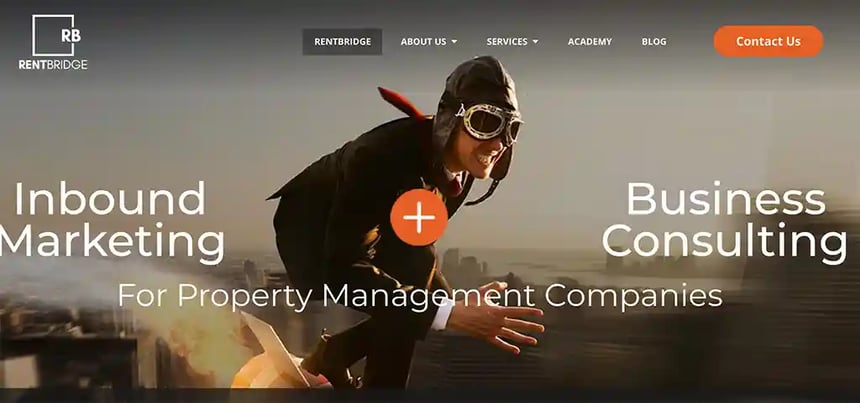
Without what Rent Bridge does, you've got four people managing hundreds of properties and collections to be made and renewals.
- That's a lot of phone calls,
- That's a lot of human contact
- That's expensive
- That’s difficult to scale.
They've mapped out so much engineering work that has gone into creating a great customer experience and a very efficient process in each of these cycles. This is just in the collections deal pipeline stages and you can see the work that's been going on behind the scenes that have been taking the exhaust pipe off the Tesla. They've also been landing the rockets because the work has gone into making this a great product and significant.
Just one thing that it does is cash for keys program. There is some automation in here and, HubSpot uses a couple of other plugins one of those is sales message, which sends text messages and emails. It is an unfortunate situation where someone's going to be evicted because collections have repeatedly tried to get the rent and it's just never going to happen. So to keep the property owner happy, you know that the property has to be vacated. You want to do it in a humanly empathetic way as possible and one of the ways is using the cash for keys program because often what happens is in that situation, the unit gets trashed and then can’t let it again because it needs repair. Everybody loses in that situation. A text that an email goes out to say, you're going to get this document and PandaDoc sends this document.

This is not your standard email. This is a document that has a video in it, which plays and explains the situation to the tenant. Explaining that, unfortunately, they are going to be leaving the property, but the good news for them is if they return their keys, they will receive a cash sum, I think this is currently $50. , So the tenants tend to opt into that and they get some money back for the keys. They leave quietly, the unit isn't trashed. It saves an enormous amount of time and money just for that one simple thing. So this is an automated process, but because of the video, it's a very human process. It's a video that can make the technology be human.
"It saves about a thousand dollars a day, which is pretty darn significant"
Because it's HubSpot, some dashboards show the business at all sorts of stages of how this automation is running through. How many of these situations are at which stage, it's about helping these businesses become more profitable and getting some time back. The labour that's involved, the cost of the cash for keys program, if we just sum up what that one thing out of the many parts of this system will do. It saves about a thousand dollars a day, which is pretty darn significant. If you were looking at a standard marketing agency trying to justify what the charge for their services is, this changes the game completely because it makes the whole business more efficient. On the lease expiring and renewals, there's a process to go through on how you handle that. and so the system automatically sends text messages using Zapier and some automation.
PandaDoc is key here. If you've heard of PandaDoc, it’s probably because you have been thinking of it as a proposal software tool and that's an I-shaped and narrow-minded way to look at it. A T-shaped person looks at all the things that PandaDoc can do across the whole business PandaDoc sends a letter to the unit owner asking several questions, do you want to re-let your property yes or no? If yes, then it takes care of sending the letter to the tenants asking if they want to renew their lists. This is a new lease and it will all happen automatically and saves hundreds of phone calls based on whatever the owner chooses, whether they want to re-let it, your automation takes care of the rest including sending out the PandaDoc to close the loop, there's another $109,000 worth of saving and you put all this together and this is the chess piece. This is a queen.
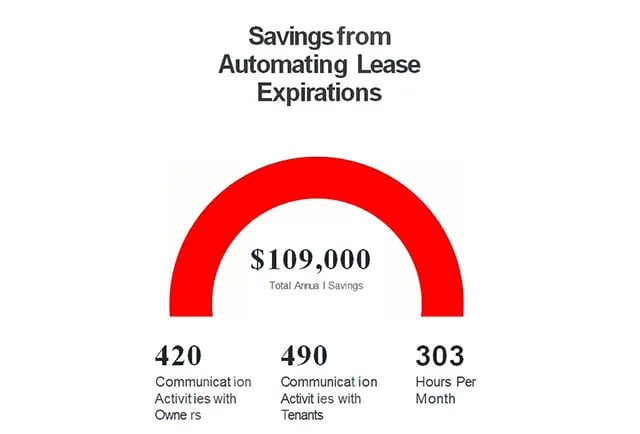
If you were a company that did marketing services for rental property management companies, would you want to go up against Rent Bridge? It's game over right? They're like a Tesla or Space X, in the industry. There's so much good stuff in there, but the savings at the end of the day is what they were aiming to do and they're doing all of that on HubSpot. So there's T-shaped expertise and there's HubSpot as a platform, Hub Do cloud, which is our part is where the PandaDoc and other pieces come into play. We make that easy to plug that in so that every new property manager, we on board for them and then customises per client.
I do have one other quick example, I would like to mention Myrna who is in the US and focuses on travel. She aims to help travel agencies because she believes that she could make the world a better place. After all, travel helps to do that. Her WHY? isn't helping travel agencies, she's doing like Rent Bridge and building a complete business system for travel agencies, not just looking at marketing, but looking at the sales, and customer service right around to complete the customer experience. Travel agencies would be crazy not to work with her and if you're not sure how you would apply a flywheel to your business because the hub doesn't seem that well-oiled today and sales, marketing and customer service aren't all singing from the same hymn sheet, align it to your why. I highly recommend that as an exercise and there are some great tools. Simon Sinek’s website, there's a set of tools that you can now use online to do a personal why, but there's also a book called Find your Why and that gives a company and a team the methodology to find your way to align to.


